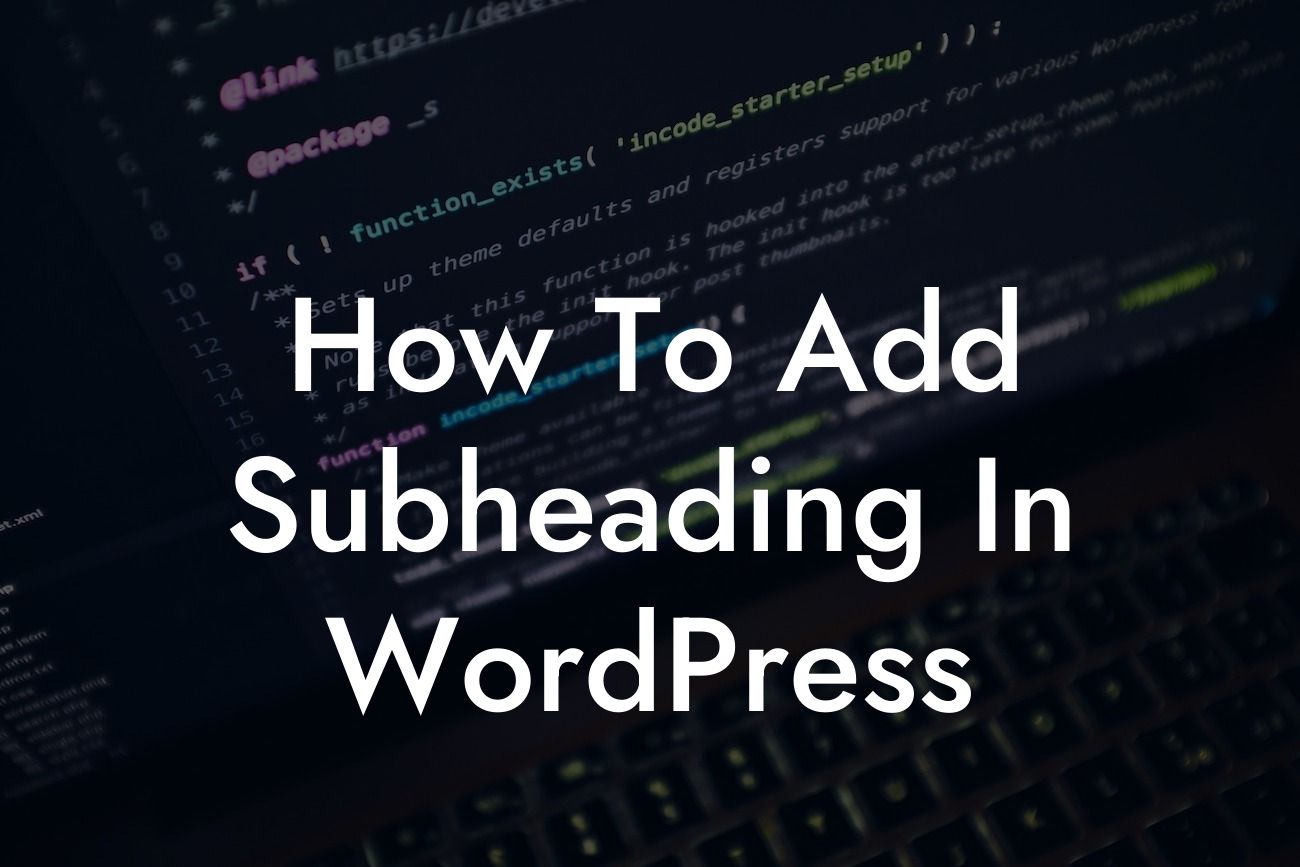Whether you are a blogger, business owner, or online entrepreneur, having an organized and engaging WordPress website is crucial to drive more traffic and keep your audience engaged. One effective way to improve the structure and readability of your content is by using subheadings. In this comprehensive guide by DamnWoo, we will take you through the step-by-step process of adding subheadings in WordPress. By the end, you'll have the knowledge to create visually appealing and well-structured articles that will captivate your readers.
Adding subheadings in WordPress doesn't have to be complicated. Follow these simple steps to make your content more visually appealing and user-friendly:
1. Understanding the Importance of Subheadings:
Subheadings serve as signposts within your content, guiding readers through your article and breaking it into manageable sections. They make it easier for your audience to scan through your content, find relevant information, and understand the main points.
2. Choosing the Right Heading Tags:
Looking For a Custom QuickBook Integration?
WordPress offers various heading tags, ranging from H1 to H6. Selecting the appropriate heading tags for your subheadings will not only enhance your article's visual hierarchy but also improve your website's SEO. Typically, H2 tags are used for main subheadings, while H3 tags are used for sub-subheadings.
3. Integrating Subheadings in the Block Editor:
If you're using the WordPress Block Editor (Gutenberg), adding subheadings is a breeze. Simply select the text you wish to turn into a subheading, click on the "Heading" dropdown option in the block settings panel, and choose the appropriate heading level.
4. Customizing Subheadings in the Classic Editor:
For those still using the Classic Editor, adding subheadings requires some additional steps. First, switch to the "Text" tab in the editor. Then, manually add the HTML tags around your desired subheading text, using the appropriate heading tag code (e.g.,
or
).
How To Add Subheading In Wordpress Example:
Suppose you're writing an article about travel destinations. Your main subheading could be "Top 5 European Cities to Visit", followed by sub-subheadings such as "Paris: The City of Love" and "Barcelona: A Mediterranean Gem". By adding these subheadings, you break down your article into digestible sections, making it easier for readers to navigate and comprehend the information.
Now that you know how to add captivating subheadings in WordPress, it's time to implement this technique on your own website! By utilizing subheadings effectively, you'll not only improve the user experience but also make your content more SEO-friendly. Don't forget to share this article with your fellow bloggers and explore other guides on DamnWoo to further enhance your WordPress skills. And if you want to take your website to the next level, try one of our awesome plugins to supercharge your success. Happy subheading!













